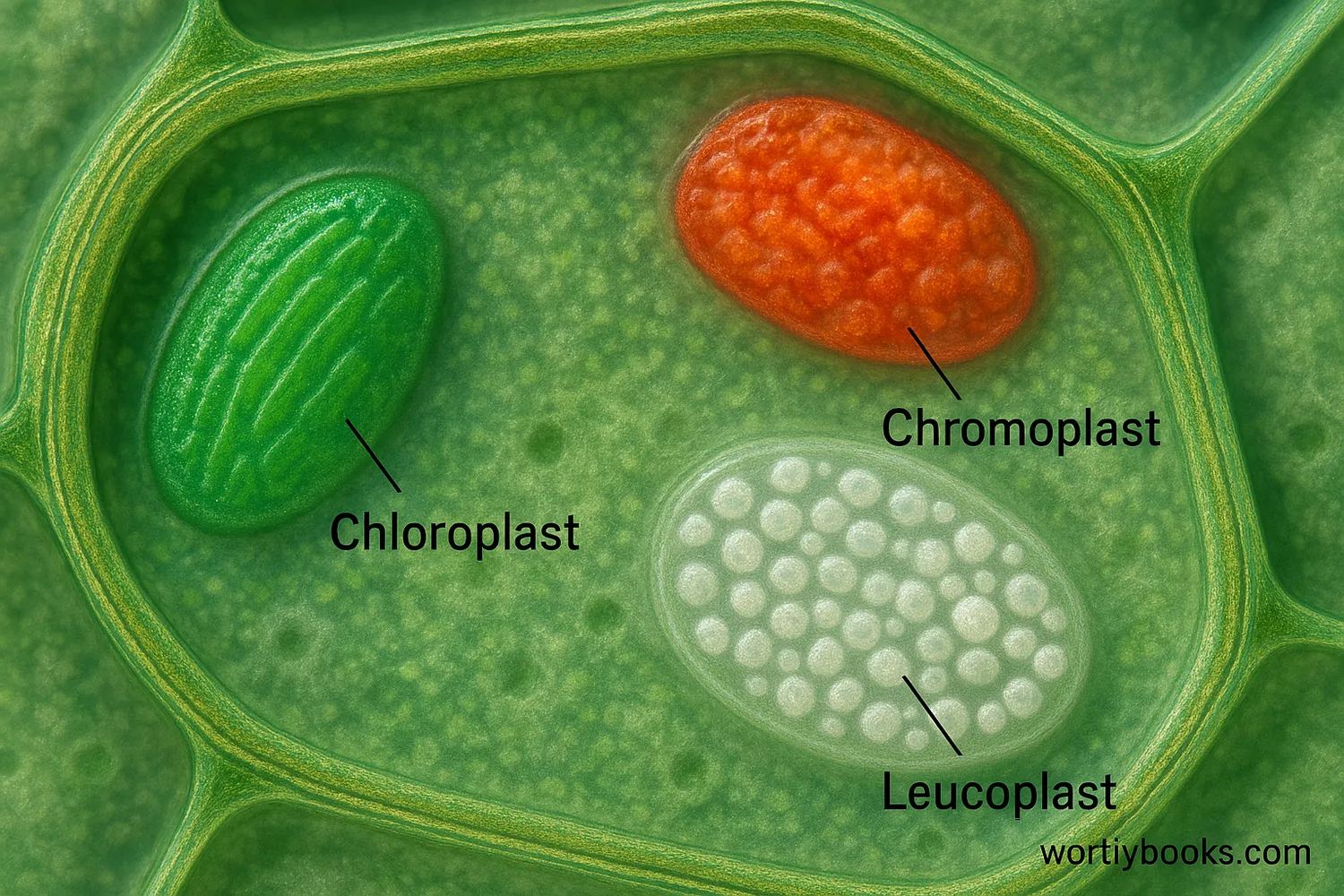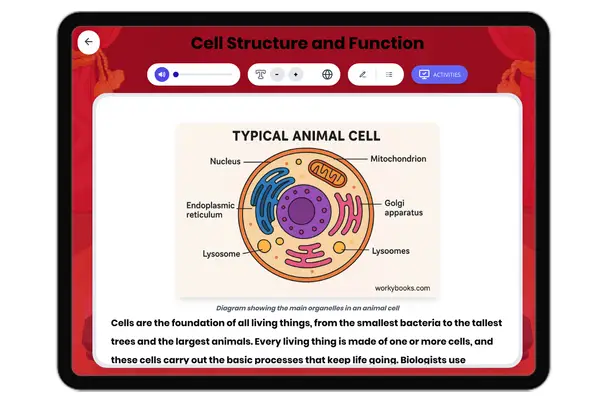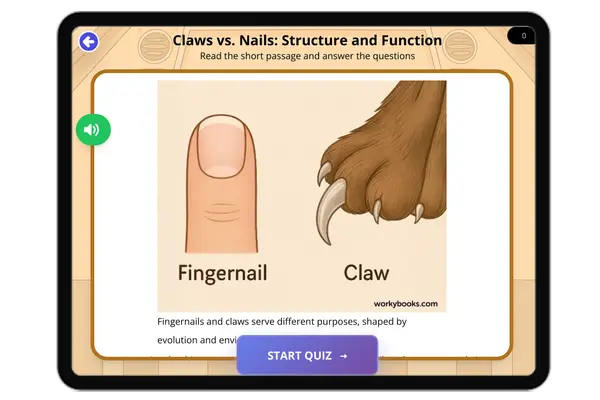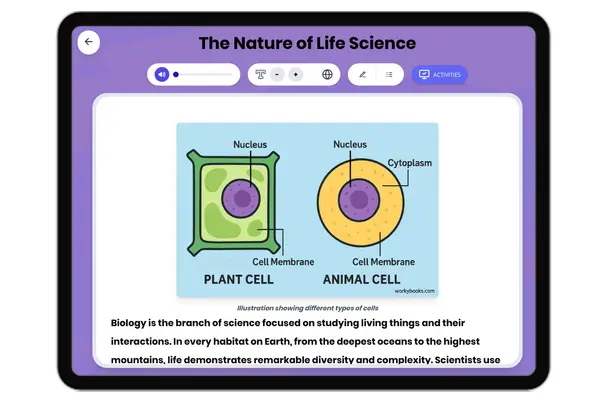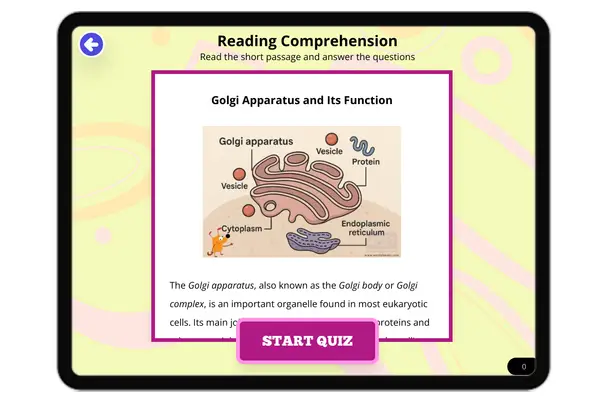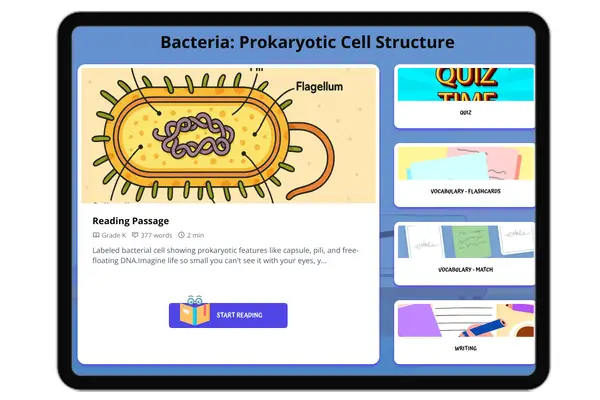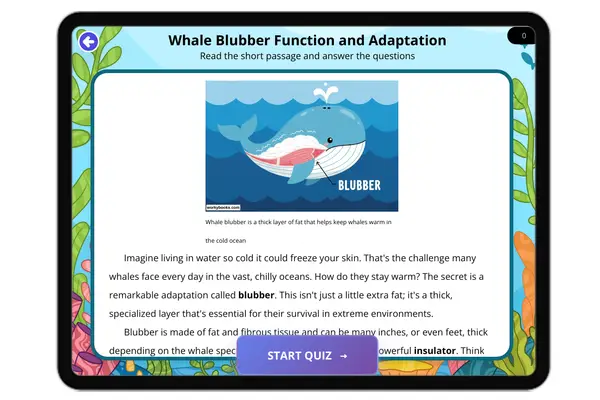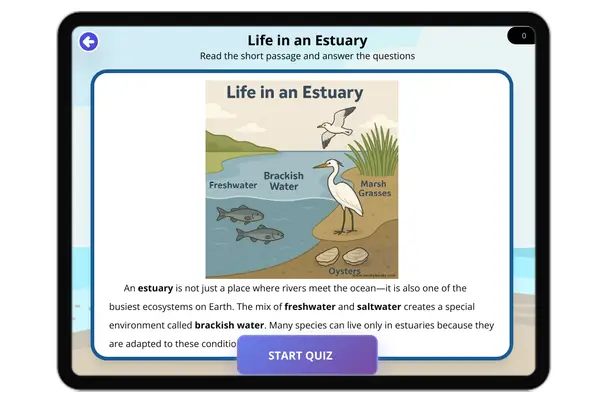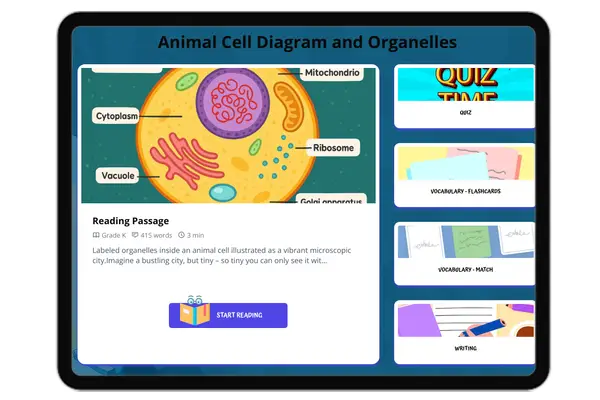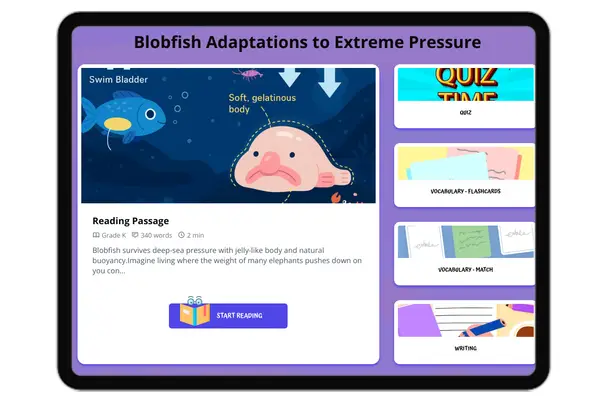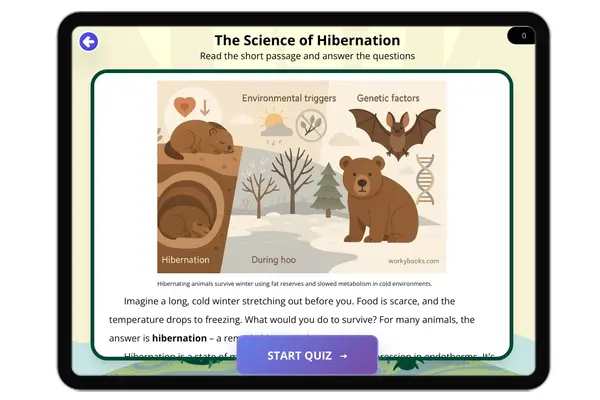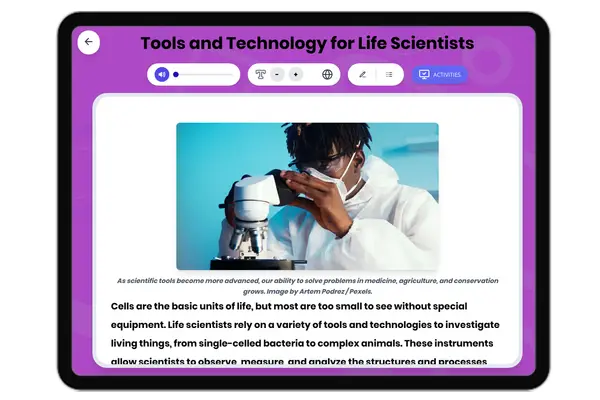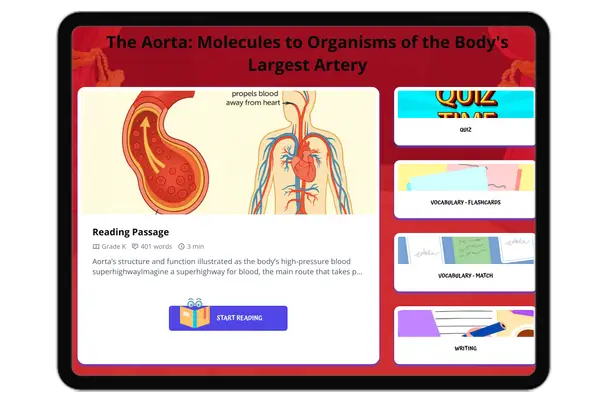Do onion cells have chromoplasts — Reading Comprehension
Premium Resource
Grades
- 3
- 4
- 5
- 6
- 7
- 8
PRINT+DIGITAL RESOURCE
This learning resource is available in interactive and printable formats. The interactive worksheet can be played online and assigned to students. The Printable PDF version can be downloaded and printed for completion by hand.
About This Reader
This engaging middle school science passage explores the different types of plastids found in plant cells: chloroplasts, chromoplasts, and leucoplasts. It explains the specific functions of each, such as photosynthesis in chloroplasts and pigment storage in chromoplasts. The passage then focuses on the onion, a common example studied in biology, to explain why its cells primarily contain leucoplasts for starch storage rather than chromoplasts or chloroplasts. The content is directly aligned with life science and biology topics for grades 6-8, addressing concepts related to cell structure and function. It uses clear, concise language and bolded key terms to enhance learning, making it an excellent resource for students studying plant cells and organelles. The passage encourages students to connect cellular structures to the observable characteristics and functions of different plant parts, supporting a deeper understanding of NGSS standards.
Perfect For:
👩🏫 Teachers
- • Reading comprehension practice
- • Auto-graded assessments
- • Literacy skill development
👨👩👧👦 Parents
- • Reading practice at home
- • Comprehension improvement
- • Educational reading time
🏠 Homeschoolers
- • Reading curriculum support
- • Independent reading practice
- • Progress monitoring
Reading Features:
📖
Reading Passage
Engaging fiction or nonfiction text
❓
Comprehension Quiz
Auto-graded questions
📊
Instant Feedback
Immediate results and scoring
📄
Printable Version
Download for offline reading
🔊
Read Aloud
Voice-over with word highlighting


